Two steps back
This week: Creating a bit of a stink; Taking two steps back; Decisions, decisions; The wrong kind of fixings; What to do with the walls; Not everything is rosy; Looking back;

Once again the week has flown past. I really don’t know where time goes, but disappear it surely does.
Once again this week, I have spent quite a bit of time in the Konoba.
I seem to have been reporting on work in here for ages. It was the end of April when I started lifting the floor, so work has been in progress for six weeks.
That’s why it seems like a long time! As you will read a little further on, there has not been much visible progress even though I have spent some time working in there.
This is also the time of year to pick ripe, sweet cherries.
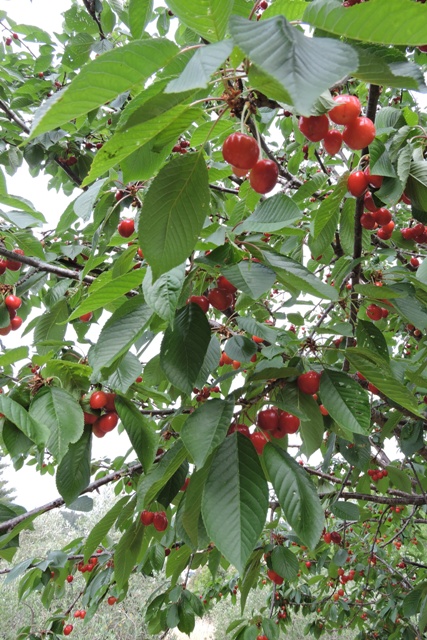
The annular eclipse on Thursday completely passed Europe by. The next eclipse, due on 4th December this year, will not be visible except in Antarctica.
In fact looking at the projection for the next 20 years, this part of Europe will not be seeing much of these solar phenomena at all.

Creating a bit of a stink
The sense of smell is not one of out dominant senses. However there are some odours which once smelled, will forever be indelibly associated with the event.
A repeat whiff will immediately bring to mind the time and place previously involved.
The odour can of course be pleasant or unpleasant. It is once of those strange facets of human memory that a pleasant odour can bring an unpleasant memory to mind.
This morning (Saturday) I awoke to the smell of escaping gas. At least for a moment that is what it seemed like.
Then I realised that a) I don’t have a piped gas supply to leak and b) this week I have been watching a dragon in the garden. That was what was making the unpleasant smell.
Growing close to the kitchen window there is a Dracunculus vulgaris, the Dragon Arum.
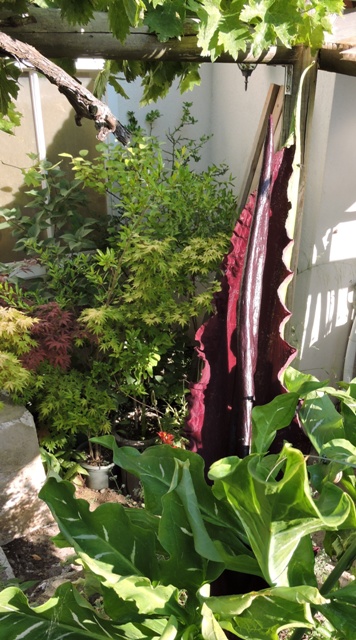
The purple flower has unfurled overnight. It gives off a smell to attract flies deep into its almost black spadix. The odour the large flower emits, is carried on the wind.
It can be described as the odour of rotting meat or piped gas.
The total height of the plant is one and a half meters, with the actual flower from the base to the tip of the spathe being 60 cm. The Dragon Arum is one of the most stunning flowers that I have, but fortunately it is short lived too.
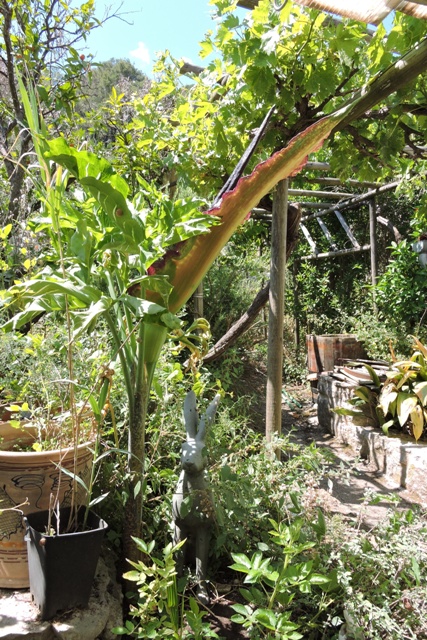
At the very end of the Top Orchard is the evergreen winter flowering Nispero, Eriobotrya japonica lindl. This photograph is from November last year when their sweet fragrance filled the air.
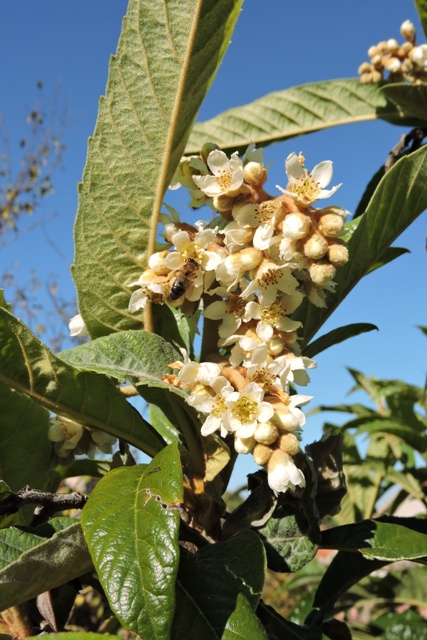
Seven months later, here we are in June and all the fruit have come ripe, almost on the same day.
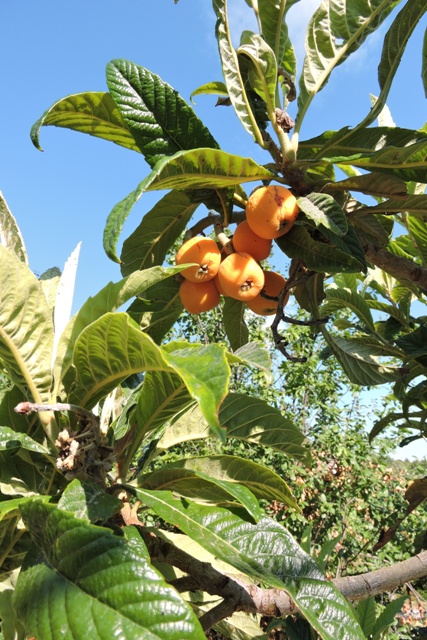
The amber coloured fruits are large and sweet, with a flavour of Apricot. However although the fruits are large on the outside, the centre of every one is filled with between two and six large, hard, rounded seeds.
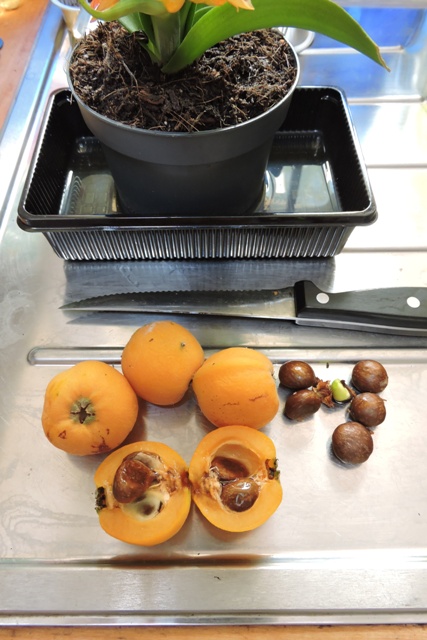
Whether it is preserving them for the winter, or eating them straight from the tree, they are a fruit tree that is well worth the effort to grow.
Taking two steps back
Work has come to a grinding halt this week on the Konoba restoration project. It feels like “One step forward and two steps back”.
The builder Špiro, was due to start on grouting between the stones on Monday morning. Instead he arrived at 8am, and said he wasn’t coming inside the gate because he had a fever and sore throat.
He didn’t think it was Coronavirus but was going for a test. He had been feeling unwell for three days.
Fortunately because I have been doing the wiring of the electrics last week, he has not been on site. Because of this, it means that I’m not included in any quarantine restrictions.
Špiro then called on Tuesday afternoon to say that he has been put “off sick” by the doctor.
Because the summer ban on working will begin in a couple of weeks, it will be September before he starts work again and completes my job.
I’m philosophical. I have other jobs that I will start, now that I know.
First of all I moved all his tools, cement and equipment from the courtyard into the Konoba, so they are out of my way.
The next job was to wash the doors down. Because of the construction of the building, I can’t simply lift the doors off the hinges. Instead, when I built the wooden doors I made them so I could unbolt the strap hinges as and when I needed to.
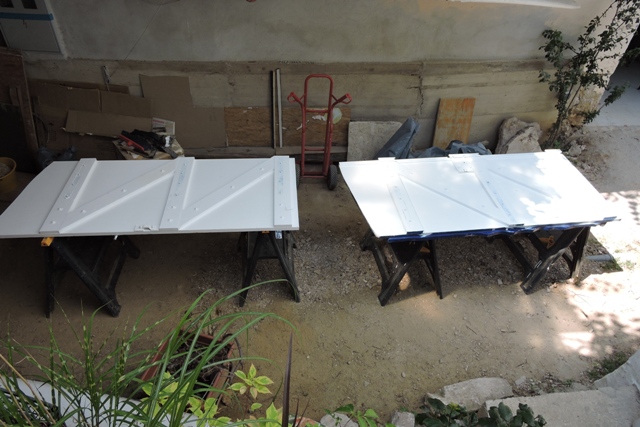
The doors have been in the courtyard while work has been going on in the Konoba. This means that they have gathered an accumulation of dust from the sand blasting and everything else.
Although there will be double glazed patio doors on the main entrance, I am going to keep the wooden doors inside.
These substantial doors will be an added security and cold winter weather barrier.
Because the floor has been raised by 2 cm, I also needed to cut a small strip off the bottom of both of the doors.
It is a lot easier to work on them when they are horizontal. I also decided it was probably a good time to give them a coat of paint as well, just for good measure.
At this time of year it is possible to undercoat and top-coat in a single day.
Decisions, decisions
I needed some more undercoat so popped down to Volat to buy a couple of litres. I also bought a couple of cheap paint brushes.
For the type of painting which I do, high quality and high cost brushes are just not needed.
If I use a brush a half dozen times before it is so thick with dried paint that I throw it away, I consider it to have been a good buy.
You cannot get brush cleaning solution here!
Looking back, I built these doors over six years ago and they were painted and installed shortly after.
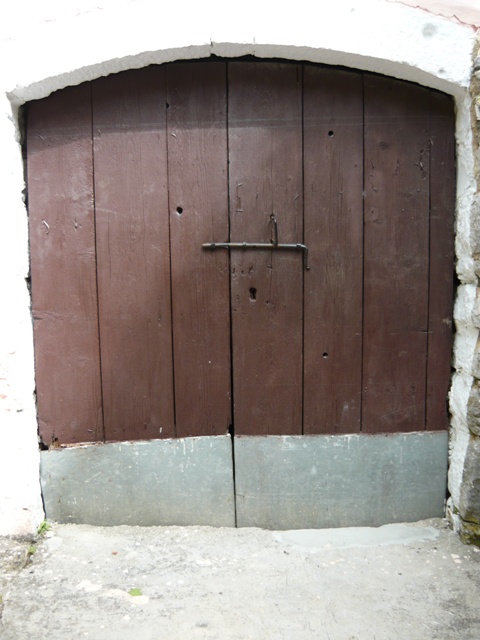
So after close to seven years of exposure to baking heat, constant sun and UV, plus the occasional lashing rain storm, the external blue paint has lasted extremely well.
With the doors lying flat, I sanded the outer side and gave the areas where the paint was showing signs of its age a coat of undercoat.
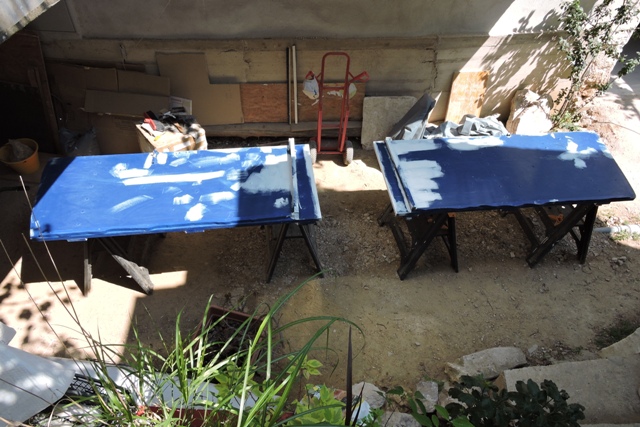
I had planned to then just give the whole of the outside surface another coat of blue paint.
Over a coffee and while the undercoat dried, which both took about the same length of time, I had a bit of thinking time.
I decided that because the inside of the door has proper door ledges and braces, it would be easier to paint the inside with the doors flat, and then the outside once they were re-hung.
It was a morning’s work to sand the inner faces, remove some flaking paint and then give a coat of primer and gloss top coat.
By mid afternoon, the new gloss topcoat was dry.
However, although I was really tempted to move them from their trestles and hang them, I decided that I would leave them for 24 hours to allow the paint to properly harden off.
With overnight minimum temperatures at the moment barely dropping below +20 C, it wouldn’t do any harm to leave them before hanging them.
I also have a couple of drop bolts to attach too.
The wrong kind of fixings
These doors used the original blacksmith made, iron pin to secure them shut on the inside, one end of the pin being attached to a ring in the wall.
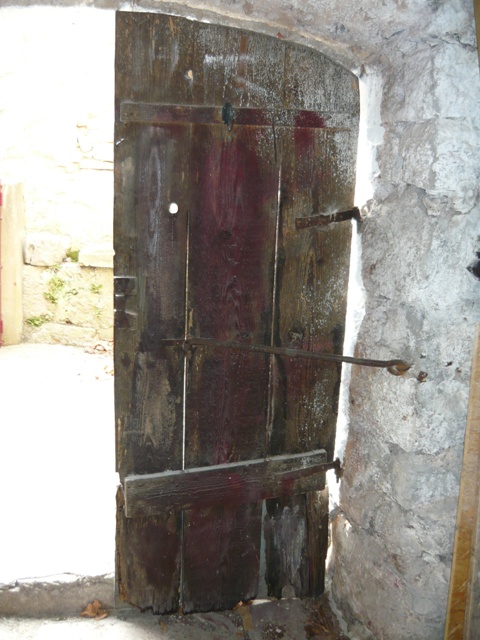
I was a little dismayed when I saw the builders had removed the ring, while removing the old mortar in preparation for sand blasting. I had planned on continuing to use it.
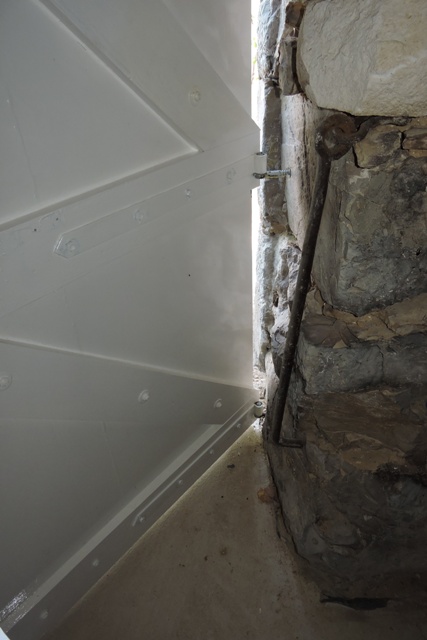
With the replacement of the mortar having been delayed, I now need an alternative means of securing the doors.
On my stock shelf I have a pair of new drop bolts which I bought from Bauhaus.
For a reason that I have never been able to fathom, there are no pre-drilled holes to fix the bolts to anything.
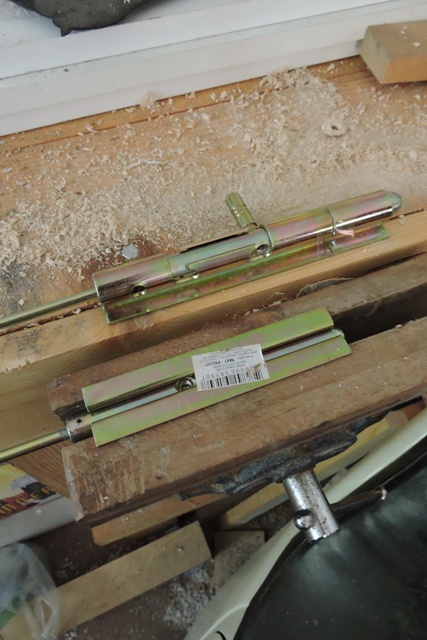
Usually the holes are there, ready for you to use, but not in this case.
There is also the issue of where to fit them. The bottom bolt is easy, because it will go straight into concrete. The top bolt, because it will mate with the arch above the door is not as straightforward.
For the top bolt I will have to wait until the door has been re-hung.
I need to fabricate a piece of timber to fit at the bottom, to go between the bottom ledge and the floor. Looking in my offcuts stockpile, I found a suitable piece that is ready to use.
I just need to reduce its thickness by 3 mm and cut it to the right size.
Going through my hardware supplies, my coach bolts are either too short or way too long. I can feel another trip to Volat coming on…
However I decided I would wait until the doors were hung, so I go just once and get everything that I need in one fell swoop.
On Friday morning I re-hung the doors and then gave the outside a coat of gloss paint.
When I bought my home, the Konoba had been a working building and the old doors were not weatherproof and quite rotten.
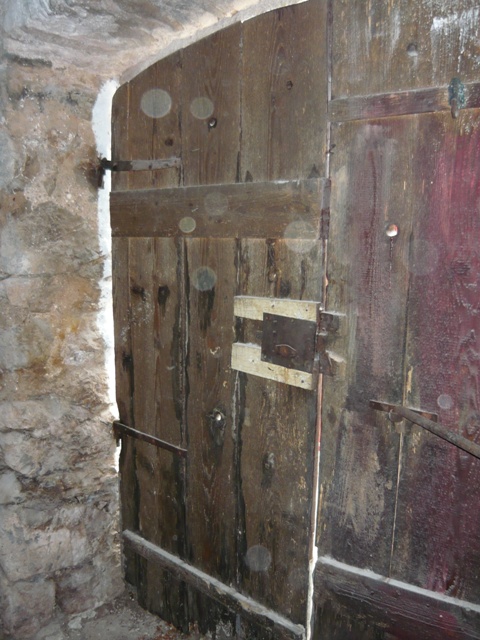
I built new weatherproof doors to stop rodent getting in and they were installed over 6½ years ago. So for outdoor paint to have lasted this long is not at all bad.
They do look nice now they are finished.
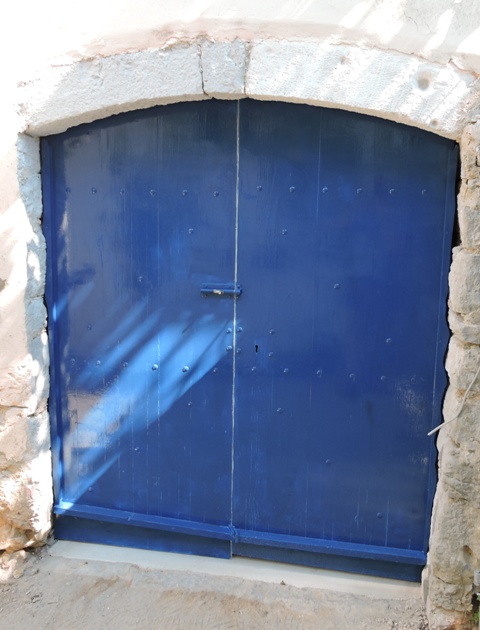
What to do with the walls
The cessation of the building work in the Konoba, until the builder has recovered and the building work moratorium ends, has caused me to think about what to do with the walls.
Having spent several thousand €uros on having a new floor, walls sandblasted and then pointed, it would be a great shame to see them deteriorate again, over time.
Although stone is an inert material, it can harbour living organisms in the form of lichens, mosses, fungi, mould and bacteria.
Then there are the creepy-crawlies that live out of sight in the depths – the walls are over a metre thick in places – and organisms live and die in there.
Just as I mentioned last week, some of the stones have beautiful colours in them with veins of quartz and other minerals.
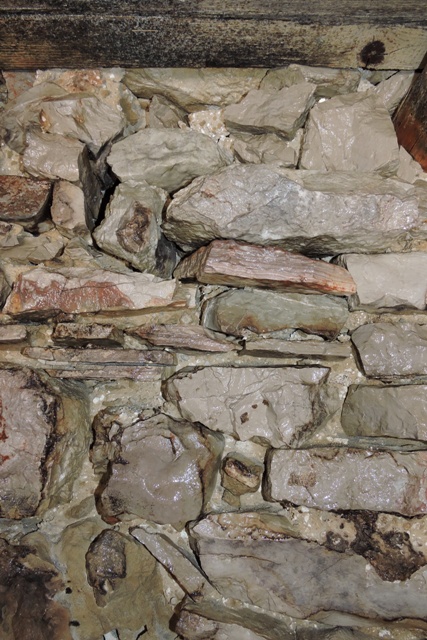
I started my research online as usual, to see what is available and what is recommended.
There are products which are sold as “Stone sealant and enhancer“, but the product data sheet doesn’t actually list the materials used. No doubt this is to stop its formulation being copied.
Volat told me that they have two possible contenders, Draco Shield and Sikagard.
Both seem to be water repellents which is not really what I need for an inside surface. I’m clearly going to need to do more research before deciding…
Not everything in the garden is rosy
I’m lucky because I have inherited the “Green fingers” gene from my Mum.
Most things that I plant – but not everything – seems to grow and generally thrives.
This is because apart from when I am doing my experiemental horticulture bit, I research the growing conditions required and try to make everything I plant feel at home.
A couple of years ago I bought a Canna Tropicana tuber. Canna lilies grow well here. They grow much too well in places.
One tuber I planted two years ago is now taking over the side bed in the Top Orchard. This thicket will have to be thinned out this next winter.
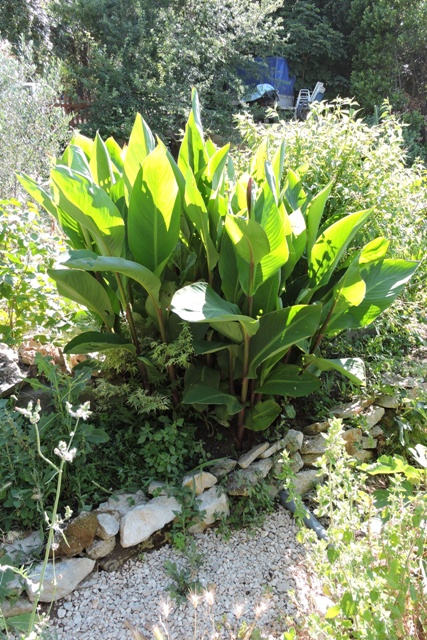
With the success I have had with this nondescript Canna, I thought I would try something a little more showy, so bought a couple of Canna Tropicana tubers.

These came from the UK and were duly planted in the same border.
For the past two years, they have produced some leaves, but have hardly thrived and have not had a single flower.
This spring, once again some small leaves appeared but as other nearby shrubs came into full leaf, they have not seen much sun. Cannas like full sun, preferably all day long.
The Canna is a relative of the Banana and was brought to Europe from the Americas in the 17th Century
I have some wild Canna Indica which came with me as seeds from Abu Dhabi. However the showy hybrid cultivars now being bred are really striking in comparison.

Tropicana is one of the Italian Phasion Cultivars. I carefully dug up the tubers, together with their root balls.
Despite receiving nightly waterings, they were quite dry, so after putting them in a big plastic pot, I gave them a good soak.
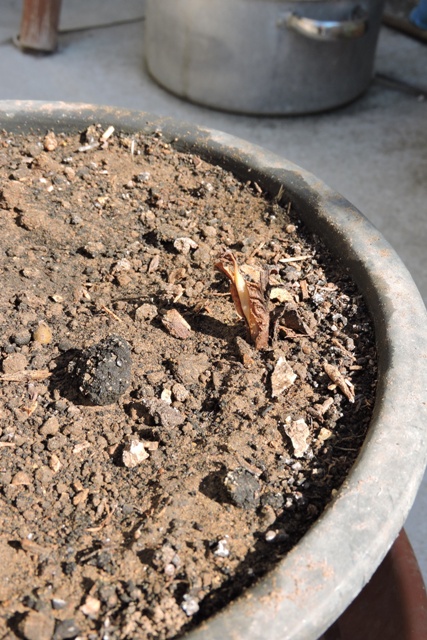
There is still a bit of green showing so I think they can be rescued. But I am going to need to apply all my knowledge to get them to thrive. NCG
Looking back – Week 23
This is the start of a new weekly section, with links to past issues of the blog.
2014/23 We’ve had a cat burglar
2015/23 Anything worth having is worth waiting for….
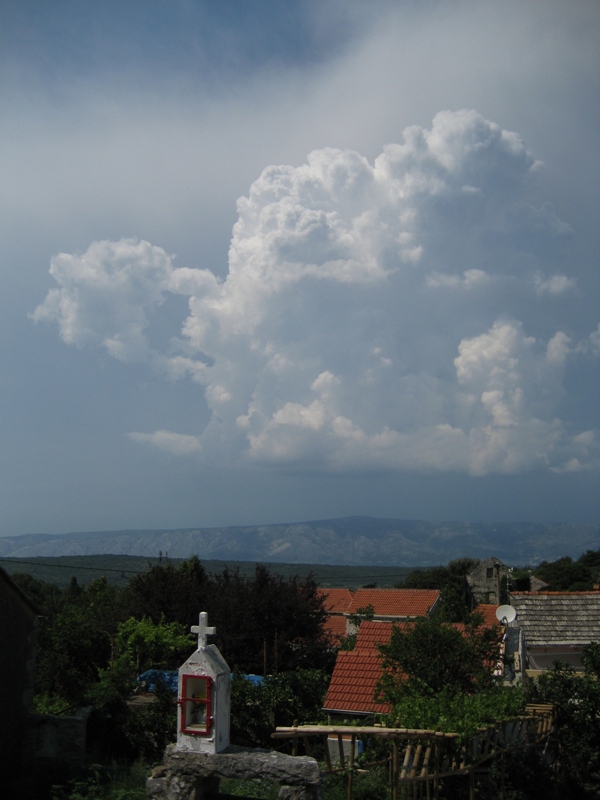
2016/23 The gardening week

2017/23 A walk on the wild side
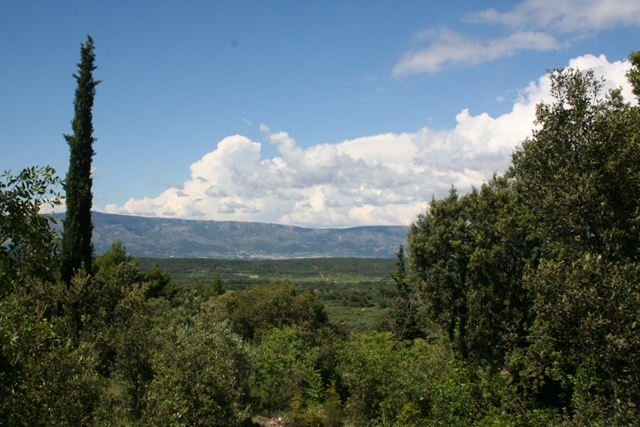
2018/23 A Konoba in the house

2019/23 What happens when the wheel comes off

2020/23 Stinky-poo yard

One Response
Elizabeth Blackledge
Hi Norman,
Cannas take me back to my childhood overseas.
If they are that dry perhaps, when you replant, the way to go would be to dig the hole and fill with water two or three times and add organic matter to hold the water and finally plant and water. To make watering easier, until the roots are established, bury an old plant pot next to the plants and water into that. The water then gets down where it is needed in the root system.
Just a thought – hope it helps.
Love reading your news as always. Take care.